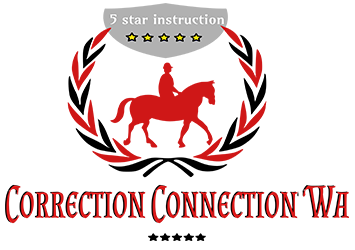Effective position for riding the Hunter
September 5, 2017 6:58 pm Leave your thoughtsAn effective position for the Hunter horse, is when both the rider and the horse are balanced with one another. The riders position over the fence should be where the hips are low in the saddle- and allowing the hip to move slightly back as the horse stretches forward and down over the fence, with the leg well underneath. Leg positions that may cause loss of center is a leg position too forward, as it pushes the rider too far back on the hips and puts the rider behind the motion.
While another common error, is the leg placed too far back behind the girth. This tips the rider ahead of the horse. If the horse is one that has lots of jump, the rider will find himself/herself with a horse jumping too far back, or away from his fence. A balanced leg set deeper into the stirrup while the leg is in contact of the rib cage, allows the horse to stay in motion- and allows the rider to know where the horse is at all times.
The arm position is also critical for the outcome of a nice approach to the fence. As is the communication between the rider and the horses mouth. When contact is controlled and you have a hold of the rein, notice I am stating a hold of and not pulled rein. The rider should not have a loop in the rein. Rather a soft feel between your horses mouth and your hands, allowing the rider to have that nice follow line from the bit to the elbow. While your elbows are allowed to move slightly forward in front of your hip bone, the forward direction of the jump allows your hands to form a narrow roadway-like follow through with your arm, hands, and body.
Later, many can learn what we call “crest release.” This comes with learning more about your horse and his style, and in many times with soft mouth horses, a crest release is needed. The riders head position is one that will save you, when you are looking forward and up on to the next fence. A horse that may be a bit new, or likes to refuse, may be the difference between keeping him honest. Most importantly, the head and eyes are up, looking forward. This will allow your natural balance to stay on. When a rider looks down, they lose their sense of balance and will most likely result in a refusal or a fall from the rider. Last would be, that the back and shoulders when approaching a fence are straight and the body is up. The hips are also moving forward with the horse. We use two terms, one- called a three point position, and the other- a two point position. I listed three point first as I tend to like the three point, as it has a slight dropped contact with the seat bones- without using the complete hip that’s sometimes used when horses need a bit more drive to the fence. The two point can keep a forward horse in motion. If rider is too high out of the saddle, this will result in loss of control of speed, and/or corners. The body position should be in a forward position to the fence, with squared off shoulders and back flat, not hollow. When the horse reaches the fence the back is flat and about the angle of your horses neck over the fence, the rider allows the contact and communication to stay in motion- looking on to the next fence or combination of fences, recovering and back into the three point position. Thus setting up for the next fence or fences in line.
The picture submitted is a lovely take on this motion and movement, and a result of a well ridden fence. I hope this helps those that are riding hunters, to concentrate on their positions for a better ride. I have given a slight overview of hip, leg, arm positions, communicating with the mouth and bit, forming a roadway, crest release, riders head position, two and three point positions, as well as controlling speed and corners. Want to learn more about the ART of the RIDE (C)? Contact me at [email protected] All the best to you and your next ride! Linda Ketter Master Instructor/trainer/coach
Categorised in: Training
This post was written by lketter

